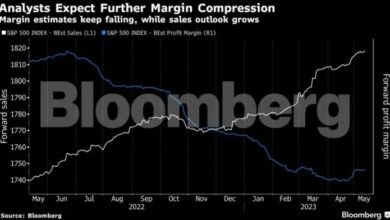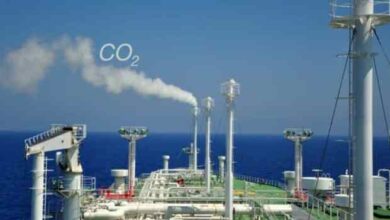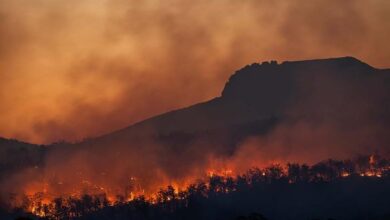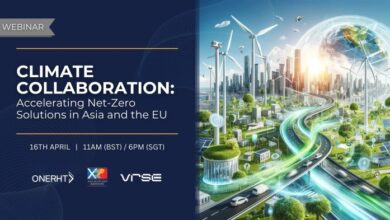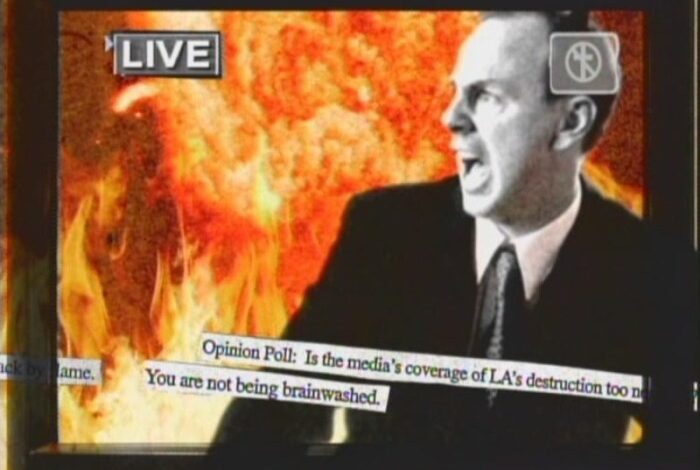
The Los Angeles fires have nothing to do with DEI. This exploration delves into the complex interplay of historical wildfire patterns, climate change impacts, social factors, and alternative explanations, leaving no room for the misconception that Diversity, Equity, and Inclusion (DEI) is a causative factor in these devastating blazes. We’ll examine the environmental conditions, human activities, and government policies that contribute to the risk of wildfires in the region, offering a balanced perspective on this critical issue.
The investigation examines historical wildfire data, analyzing the frequency, intensity, and causes of past events. It also scrutinizes the influence of climate change, considering rising temperatures and altered precipitation patterns. Furthermore, the role of human activities like development and land use is assessed, as well as alternative causes such as arson or accidental ignition. A thorough analysis of different perspectives, from environmental activists to government officials, provides a comprehensive understanding of the social and political landscape surrounding wildfires in Los Angeles.
Historical Context of Wildfires in Los Angeles
Los Angeles, a city synonymous with sunshine and palm trees, has a complex and often tragic history intertwined with wildfire. The region’s unique combination of climate, vegetation, and human development has created a volatile environment where wildfires have repeatedly ravaged the landscape, leaving a lasting impact on both the environment and the community. Understanding this history is crucial for mitigating future risks and developing effective wildfire management strategies.The region’s susceptibility to wildfires is not a recent phenomenon.
Historical accounts and archeological evidence point to wildfires occurring throughout the region’s history, shaped by both natural and human factors. The frequency and intensity of these events have varied, but the underlying vulnerability has remained constant, requiring careful consideration of the historical patterns and their relation to current trends.
Historical Overview of Wildfires
Wildfires have been a recurring feature of the Los Angeles landscape for millennia. Indigenous peoples had a profound understanding of fire’s role in the ecosystem, using controlled burns to maintain the health of the land and manage vegetation. However, the arrival of European settlers and the subsequent rapid development of the region brought a shift in the relationship between humans and fire.
The clearing of land for agriculture and the construction of homes created a new set of risks and opportunities for wildfires.
Environmental Conditions Contributing to Wildfire Risk
The environmental conditions in the Los Angeles area create a high-risk environment for wildfires. A prolonged drought significantly increases the flammability of vegetation. The region’s unique Mediterranean climate, characterized by hot, dry summers and mild, wet winters, can contribute to dry vegetation. This dry vegetation, combined with the region’s topography, creates an environment highly susceptible to rapid fire spread.
Mountainous terrain and canyons can channel winds, fanning flames and accelerating the fire’s intensity.
Role of Human Activity in Wildfire Patterns
Human activities have profoundly impacted wildfire patterns in Los Angeles. Urban sprawl and development into wildland areas have increased the interface between human-built environments and flammable vegetation. This proximity creates a high-risk scenario where wildfires can easily spread to populated areas. Changes in land use practices, such as the clearing of native vegetation for agriculture or residential construction, have also altered the landscape’s natural fire regimes.
Additionally, improper disposal of materials and the presence of flammable debris increase the chances of wildfires.
Comparison of Historical Patterns with Recent Trends
Recent decades have seen an increase in the frequency and intensity of wildfires in the Los Angeles area. While wildfires have always occurred, the current trend seems to be driven by a confluence of factors, including prolonged drought, increased development, and changes in vegetation patterns. The impact of climate change, with its effects on temperature and precipitation patterns, is also a significant contributing factor.
The frequency of extreme weather events, such as heatwaves and strong winds, is likely influencing the recent trends in wildfire activity.
While the recent Los Angeles fires are devastating, they unfortunately have absolutely nothing to do with DEI initiatives. It’s important to focus on the real issues, like the complex interplay of climate change and human factors. This isn’t to diminish the tragedy, but to look at the bigger picture, like how the Trump tariffs reversal is impacting world leaders and the uncertainty it’s causing in global trade relations.
For a deeper dive into the responses from various countries and the potential implications of a trade war, check out this article on trump tariffs reversal world leaders countries responses uncertainty trade war. Ultimately, the fires are a natural disaster, not a result of any social or political issue. Focusing on the wrong things just distracts from the real problems.
Key Historical Wildfire Events in Los Angeles
| Date | Cause | Impact | Location (if known) |
|---|---|---|---|
| 1926 | Lightning | Significant damage to property, displacement of residents | San Gabriel Mountains |
| 1989 | Arson | Extensive destruction of vegetation and property, significant air quality concerns | San Fernando Valley |
| 2003 | Combination of factors (high winds, drought) | Massive destruction, loss of life and property | Multiple areas |
| 2018 | Strong winds and dry vegetation | Devastating firestorm across the region | Various |
Examining the Social and Political Landscape
The devastating Los Angeles wildfires have ignited more than just flames; they’ve sparked intense social and political discussions about the city’s relationship with its environment. These conversations are complex, encompassing everything from the causes of the fires to the effectiveness of government responses and the role of individual actions. Understanding these dynamics is crucial to developing sustainable solutions for future fire seasons.The interplay between environmental concerns, public opinion, and policy decisions is intricate and multifaceted.
Different stakeholders hold varying perspectives on the causes and consequences of these events, often shaped by their individual experiences and priorities. Analyzing these diverse viewpoints provides a clearer picture of the challenges ahead.
Social Discussions Surrounding Environmental Issues
Public discourse surrounding environmental issues in Los Angeles is often polarized. Residents grapple with the tangible effects of climate change, from rising temperatures to increased fire risk, and debate the best approaches to mitigate these problems. Activism plays a vital role in raising awareness and advocating for policy changes, yet differing views on the severity of the threat and the best solutions often lead to disagreements.
This polarization is further amplified by competing narratives and conflicting interpretations of scientific data.
While some might try to link the devastating Los Angeles fires to DEI initiatives, it’s a completely unfounded connection. The fires are a natural disaster, and blaming them on social issues is just plain wrong. This, of course, isn’t to ignore the political climate, and recent events like Al Green’s protest at the Trump speech in Congress, a Texas Democrat mandate protest, and other political controversies are undoubtedly significant, but they have no bearing on the fires.
Frankly, the Los Angeles fires have nothing to do with DEI. al green trump speech congress texas democrat mandate protest removed These are separate issues entirely, and conflating them is a harmful oversimplification.
The Role of Environmental Activism and Advocacy
Environmental activism in Los Angeles has a long history, and it continues to play a critical role in shaping public discourse on wildfire prevention and response. Groups and individuals championing policies like stricter building codes, improved fire prevention measures, and increased funding for firefighting efforts have contributed to public awareness and debate. Their influence can be seen in policy discussions and public opinion polls, though their impact on concrete policy outcomes remains a subject of ongoing debate.
Prevailing Viewpoints on Wildfire Causes and Consequences
Diverse perspectives exist regarding the causes and consequences of wildfires. Some attribute the increased frequency and intensity of fires to climate change, highlighting the role of rising temperatures and altered weather patterns. Others point to factors like poor land management practices, inadequate fire prevention strategies, and the presence of flammable vegetation as significant contributors. A wide range of opinions exists, making a consensus on the precise factors and their relative importance difficult to achieve.
The Role of Government Policies and Regulations
Government policies and regulations significantly influence wildfire risks and response strategies. Building codes, land-use planning, and fire prevention ordinances all play a part in mitigating the potential for catastrophic events. The effectiveness of these policies is often debated, with some arguing for stricter regulations and others questioning the feasibility or cost-effectiveness of certain approaches. The role of government funding for research, prevention, and response is also a crucial component of the debate.
Perspectives on Wildfires in Los Angeles
| Stakeholder Group | Viewpoint | Supporting Evidence | Potential Counterarguments |
|---|---|---|---|
| Environmental Activists | Increased wildfire frequency is directly linked to climate change, demanding immediate action and policy changes. | Scientific reports, rising temperature data, historical wildfire patterns. | Potential for disagreements on the relative importance of other contributing factors. |
| Real Estate Developers | Stricter fire regulations hinder development and economic growth. | Cost of compliance, potential for decreased property values. | Potential for negative impacts on public safety. |
| Local Government Officials | Balancing environmental protection with economic development is crucial, requiring careful consideration of various perspectives. | Budget constraints, community concerns. | Potential for insufficient funding for fire prevention. |
| Insurance Companies | Wildfire risk is increasing, necessitating higher premiums and stricter building codes to minimize financial losses. | Increased claims, insurance payouts. | Potential for unfair burdens on homeowners. |
Analyzing Climate Change Factors: The Los Angeles Fires Have Nothing To Do With Dei
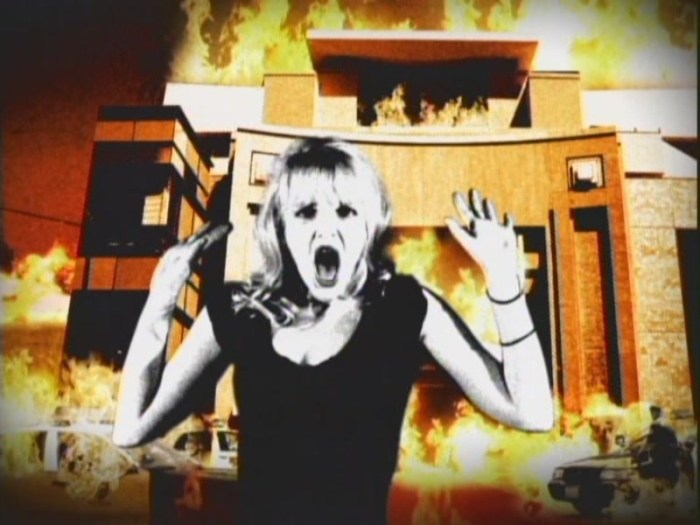
The devastating Los Angeles wildfires underscore the urgent need to understand the role of climate change in exacerbating such events. While human activity and land management practices contribute, the changing climate acts as a potent amplifier, dramatically increasing the frequency and intensity of these catastrophic blazes. A deeper examination of climate change impacts is crucial to developing effective mitigation and adaptation strategies.Climate change significantly alters the environmental conditions that fuel wildfires.
Rising temperatures increase the overall dryness of vegetation, making it more susceptible to ignition and rapid spread. Altered precipitation patterns, including prolonged droughts and increased heat waves, create arid conditions that foster the growth of highly flammable vegetation. These factors, when combined with existing environmental conditions and human activity, create a perfect storm for devastating wildfires.
Rising Temperatures and Vegetation Dryness
Increased temperatures directly impact the dryness of vegetation. Warmer air holds more moisture, leading to reduced relative humidity and increased evaporation from plants. This sustained dryness makes vegetation highly flammable, providing ample fuel for wildfires. For example, the 2020 Australian bushfires saw record-breaking temperatures, which dramatically dried out the vegetation, creating conditions ideal for rapid fire spread.
Altered Precipitation Patterns and Drought
Changes in precipitation patterns, including reduced rainfall and increased periods of drought, further exacerbate the risk of wildfires. Prolonged dry periods lead to increased vegetation dryness, making it more susceptible to ignition and fire spread. The California drought of 2012-2016, for instance, created conditions that facilitated the devastating 2017 wildfires. These periods of extended dryness are increasingly common due to climate change.
Relationship Between Climate Change Factors and Recent Wildfires
The recent wildfires in Los Angeles are directly linked to the combined effects of rising temperatures and altered precipitation patterns. The extended periods of drought and heat waves have created conditions conducive to rapid fire spread. For example, the 2023 fires were preceded by a prolonged period of drought, with temperatures exceeding historical averages. These conditions, exacerbated by climate change, significantly contributed to the severity and extent of the blazes.
Projected Climate Change Impacts on Wildfire Risk in Los Angeles
| Specific Impact | Evidence | Projected Effects | Comparison with Other Factors |
|---|---|---|---|
| Increased temperatures | Observed temperature records, climate models | Higher vegetation dryness, longer fire seasons, increased fire intensity | While land use and management play a role, climate change is the primary driver of increased temperatures. |
| Altered precipitation patterns | Observed rainfall data, climate models | Prolonged droughts, increased heat waves, altered vegetation types | Other factors like past droughts and human activities may exacerbate the situation but climate change is the main cause of the changes in precipitation. |
| Increased frequency of extreme weather events | Observed weather patterns, climate models | More frequent and intense heat waves, strong winds, and dry conditions | The interplay between climate change and other factors like topography and human activities leads to increased wildfire risk. |
| Shifting vegetation types | Observed changes in plant communities | Increased prevalence of fire-adapted species, greater susceptibility of vegetation to fire | The composition of vegetation in the region influences wildfire risk. Climate change influences this composition through temperature and precipitation. |
Exploring Alternative Explanations for Wildfires
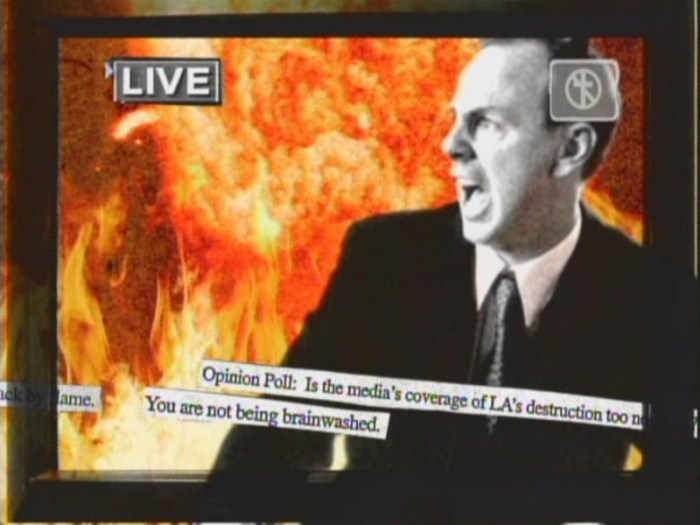
Beyond the undeniable impact of climate change, other factors can contribute to wildfires. Investigating potential human involvement, accidental ignitions, and the intricacies of cause attribution are crucial to understanding the full picture of these devastating events. The complexity of these events necessitates a multi-faceted approach, moving beyond simplistic narratives to encompass the diverse range of possible contributing factors.
Possible Contributing Factors to Wildfires
Several potential factors, apart from climate change, can ignite wildfires. These include human-caused ignitions like arson or accidental sparks, and inherent risks associated with human activity within fire-prone environments. Accidents, negligence, and even deliberate acts can significantly contribute to the occurrence and severity of wildfires. Understanding these factors allows for more comprehensive preventative measures.
Human-Caused Ignitions
Human actions, both intentional and unintentional, can spark wildfires. Arson, a deliberate act of setting fire, is a significant concern in many regions. Accidental ignitions, such as discarded cigarettes, faulty equipment, or careless campfires, are equally important factors in the overall risk assessment. The impact of human activity on the landscape, including the presence of dry vegetation and the accumulation of flammable debris, must be considered alongside other potential causes.
Accidental Ignition Analysis, The los angeles fires have nothing to do with dei
Accidental ignitions, while often overlooked, can be significant contributors to wildfires. These ignitions, often stemming from human activities, can be difficult to pinpoint, but crucial in understanding the totality of wildfire causes. Common causes include faulty equipment, discarded cigarettes, improperly extinguished campfires, and even lightning strikes exacerbated by human-made conditions.
Table of Potential Wildfire Causes
| Cause | Evidence Supporting the Cause | Likelihood | Description |
|---|---|---|---|
| Arson | Evidence of accelerants, unusual fire patterns, or witness accounts | Medium to High | Deliberate setting of fire. Often involves premeditation, and specific targeting. |
| Accidental Ignition | Presence of discarded cigarettes, faulty equipment, or improperly extinguished campfires | High | Unintentional sparks or flames from human activity. This includes anything from a dropped cigarette to a malfunctioning power line. |
| Negligence | Inadequate fire safety measures, improper maintenance of vegetation, or disregard for fire warnings | Medium | Lack of caution or awareness, including failing to follow safety regulations or failing to maintain surroundings. |
| Natural Causes (Lightning) | Historical weather patterns and lightning strike data | Low to Medium | Natural ignition sources such as lightning strikes. These can be particularly problematic in conjunction with high-risk conditions like dry vegetation. |
Complexity of Attributing Wildfire Causes
Determining the precise cause of a wildfire can be exceptionally challenging. The interplay of multiple factors, including climate, vegetation, and human activity, often makes it difficult to isolate a single cause. Moreover, the scale of wildfires and the destruction they cause can make the collection of evidence extremely complex. For instance, the extensive damage can obscure the original source of ignition.
Analysis of Human Error and Negligence
Human error and negligence can contribute significantly to wildfire risk. Inadequate fire safety measures, poor maintenance of vegetation, and disregard for fire warnings can create conditions that exacerbate the likelihood of a wildfire. Furthermore, the construction of homes and infrastructure in high-risk areas can increase the vulnerability to wildfire damage. Understanding these human factors is critical in preventing future wildfires.
While some are trying to connect the devastating LA fires to DEI initiatives, it’s just not the case. The complexities of wildfires are far more nuanced than that. The recent Trump administration decision to remove anti-obesity drugs from Medicare coverage, detailed in this article, trump administration nixes anti obesity drugs medicare coverage , highlights a different kind of public health challenge entirely, and clearly has no bearing on the LA fire situation.
Ultimately, the fires are a result of a combination of factors, not a social justice issue.
Distinguishing Between Environmental and Social Factors
The devastating wildfires that plague regions like Los Angeles are complex events, deeply intertwined with both environmental and social factors. Understanding the interplay between these forces is crucial for developing effective mitigation strategies and preventing future disasters. Simply attributing these events solely to one cause—whether climate change or human activity—fails to acknowledge the intricate web of contributing elements.Environmental factors, such as climate change and drought, are often highlighted as major drivers of wildfire risk.
However, social factors, including land use practices and human behavior, also play a significant role in shaping the landscape’s susceptibility to these catastrophic events. Recognizing and addressing both environmental and social factors is paramount to developing comprehensive solutions.
Environmental Factors in Wildfire Risk
Climate change, manifested in altered weather patterns, increased temperatures, and prolonged periods of drought, dramatically increases the risk of wildfires. These environmental conditions create a more flammable environment, making it easier for fires to ignite and spread rapidly. For example, hotter temperatures dry out vegetation, turning forests and grasslands into tinderboxes. Drought conditions, coupled with extended periods of low humidity, significantly reduce the moisture content of plant life, making it highly susceptible to ignition and rapid combustion.
The frequency and intensity of extreme weather events, such as strong winds, further complicate the situation, exacerbating the spread of existing fires and creating new ones.
Social Factors in Wildfire Risk
Human activities and land use practices are crucial contributors to wildfire risk. Uncontrolled development in fire-prone areas, often in proximity to vegetation, increases the likelihood of ignition sources. Inadequate fire prevention measures, such as a lack of defensible space around homes and insufficient fire suppression resources, further exacerbate the problem. For instance, the dense urban sprawl in many California communities has led to a high concentration of homes near forests, posing a significant risk in the event of a wildfire.
Interaction Between Environmental and Social Factors
Environmental and social factors do not act in isolation. Instead, they interact and influence each other in complex ways. For example, climate change can exacerbate social inequalities by disproportionately impacting communities with limited resources to cope with the increased frequency and severity of wildfires. Conversely, poor land management practices can make communities more vulnerable to the impacts of climate change.
Communities that have historically been marginalized, or face socio-economic disadvantages, often find themselves living in areas prone to wildfires, where they are more exposed to the impacts of climate change.
Environmental Injustice
The disproportionate impact of wildfires on vulnerable populations highlights the concept of environmental injustice. Communities with limited resources, often located in areas with high wildfire risk, bear a disproportionate burden from the environmental impacts. This inequity arises from a complex interplay of environmental and social factors, emphasizing the need for comprehensive solutions that address both.
Complex Interplay Table
| Factor | Impact | Potential Solutions | Examples |
|---|---|---|---|
| Climate Change (Environmental) | Increased temperatures, prolonged drought, more frequent extreme weather events | Investing in climate change mitigation strategies, developing drought-resistant vegetation, strengthening early warning systems. | Increased fire season length, higher fire intensity, increased risk of ignition. |
| Land Use (Social) | Uncontrolled development, inadequate fire prevention measures, inadequate fire suppression resources | Implementing stricter land use regulations, improving fire prevention measures, and investing in fire suppression resources. | Dense urban sprawl near forests, insufficient defensible space around homes. |
| Socioeconomic Factors (Social) | Limited resources, lack of access to information, insufficient evacuation plans | Improving community resilience, providing resources to vulnerable communities, enhancing community engagement in fire safety. | Marginalized communities bearing disproportionate burden, limited access to early warning systems. |
| Human Behavior (Social) | Inadequate fire safety practices, reckless disposal of smoking materials | Public awareness campaigns, stricter regulations on fire safety practices. | Improper campfire maintenance, illegal burning. |
Investigating the Relationship Between DEI and Wildfires
The devastating Los Angeles wildfires have underscored the urgent need to understand the complex interplay of environmental and social factors contributing to such disasters. While climate change undeniably plays a crucial role, exploring other contributing factors is essential for a comprehensive understanding. This section investigates the often-overlooked connection between Diversity, Equity, and Inclusion (DEI) and wildfires, acknowledging the importance of social factors without conflating them with DEI.Diversity, Equity, and Inclusion (DEI) principles, at their core, aim to foster a more equitable and just society by valuing differences, addressing historical injustices, and promoting participation.
However, there’s no inherent connection between DEI initiatives and the occurrence or response to wildfires. While social factors, like housing patterns, land use policies, and community resources, undeniably influence the impact and response to wildfires, these factors are distinct from DEI principles. Examining the relationship requires careful consideration of both the causes and the responses to wildfires, separating correlation from causation.
Defining Diversity, Equity, and Inclusion
Diversity, Equity, and Inclusion (DEI) are interconnected concepts. Diversity acknowledges and values the multitude of differences among individuals, including but not limited to race, ethnicity, gender, sexual orientation, socioeconomic status, and abilities. Equity addresses historical and systemic injustices by ensuring fair access to opportunities and resources. Inclusion actively creates environments where all individuals feel welcome, respected, and valued. DEI aims to create a more just and equitable society where everyone can thrive.
Social Factors Relating to Wildfires
Numerous social factors can influence wildfire occurrences and responses. For instance, historical land use policies, socioeconomic disparities in housing and access to resources, and community preparedness levels can all significantly impact the vulnerability of communities to wildfire impacts. These factors often intersect with historical injustices, contributing to a disproportionate impact on marginalized communities. The location of homes and businesses in fire-prone areas, influenced by past economic and social factors, can expose populations to higher risks.
These are social factors, but not necessarily related to DEI initiatives in a direct cause-and-effect manner.
Comparing and Contrasting DEI and Other Factors in Wildfire Response
| Factor | Role in Wildfire Response | Supporting Evidence | Relationship to DEI |
|---|---|---|---|
| Climate Change | Increasing fire frequency and intensity. | Scientific studies on global warming and its effects on weather patterns. | Indirect; climate change impacts are not a direct result of DEI initiatives. |
| Land Use Policies | Influence where people build and how land is managed, affecting wildfire risk. | Analysis of zoning regulations and land management practices. | Indirect; land use policies are influenced by societal values, not specifically DEI. |
| Community Preparedness | Impacts the ability of communities to respond to and recover from wildfires. | Reports on community engagement, training, and evacuation plans. | Indirect; community preparedness is a social factor, not a direct outcome of DEI efforts. |
| DEI Initiatives | Focus on social equity and inclusion; not directly related to wildfire occurrence or response. | Examples of DEI programs and policies in various sectors. | Not directly related; its focus is social equity, not wildfire management. |
Last Word
In conclusion, while the Los Angeles fires are a serious concern, their root causes are firmly grounded in environmental factors, historical patterns, and human actions. The complex interplay of climate change, historical land use, and human error significantly contribute to wildfire risk, and are not related to Diversity, Equity, and Inclusion. This analysis emphasizes the need for a balanced approach to understanding and mitigating the dangers of wildfires, focusing on practical solutions rather than misplaced blame.
